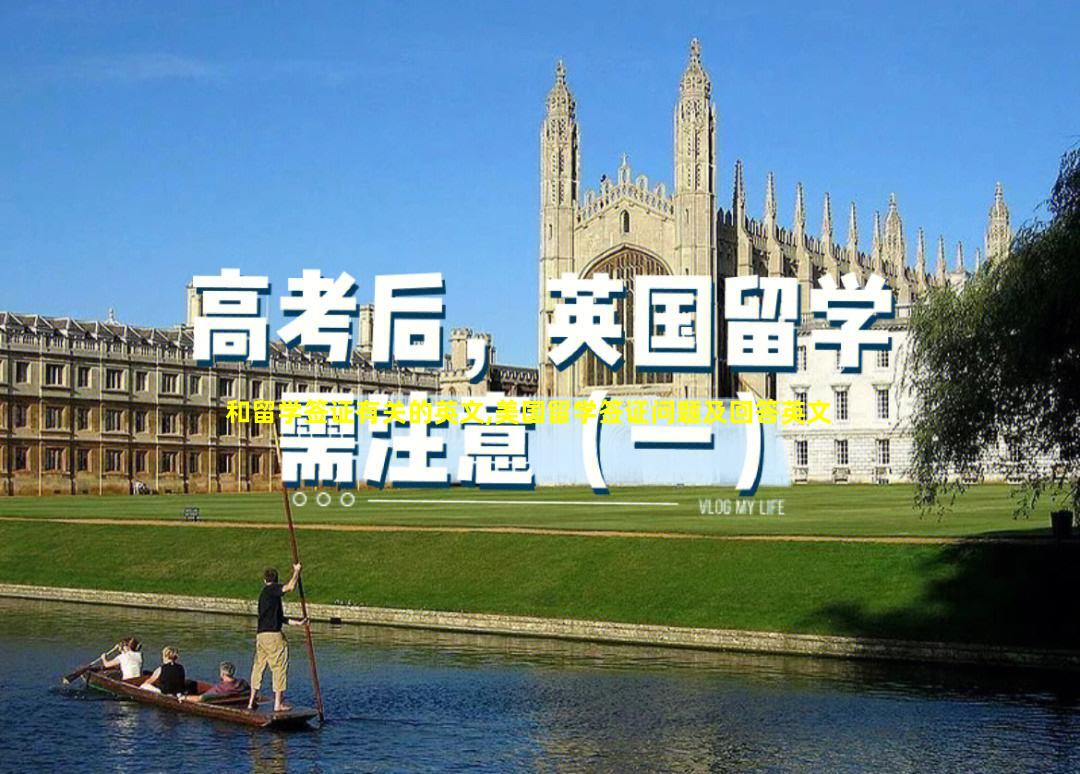 锦泰留学网
锦泰留学网"English Related to Study Visa"

1. What type of visa do I need to study in the United States?
To study in the United States, you will need to apply for a student visa, specifically an F-1 (for academic studies) or M-1 (for vocational studies) visa.
2. How do I apply for a student visa?
To apply for a student visa, you need to follow these steps:
- First, you must be accepted by a U.S. school or educational institution that is certified by the Student and Exchange Visitor Program (SEVP).
- Once accepted, you will receive a Form I-20 from your school. Pay the SEVIS fee and receive a receipt.
- Complete the online Nonimmigrant Visa Application (Form DS-160) and upload a suitable photograph.
- Pay the visa application fee and schedule an interview appointment at the nearest U.S. Embassy or Consulate.
- Attend your visa interview with all required documents, including your passport, Form I-20, SEVIS fee receipt, DS-160 confirmation, financial records, and any supporting documents required by the embassy or consulate.
3. What documents do I need to provide for the student visa interview?
You will need to bring the following documents to your student visa interview:
- Your valid passport
- Form I-20 issued by your school
- SEVIS fee payment receipt
- DS-160 confirmation page
- Financial documents to prove you can cover your tuition and living expenses during your studies
- Any additional documents requested by the U.S. Embassy or Consulate, such as academic transcripts or standardized test scores
4. How early should I apply for a student visa?
It is advisable to apply for your student visa as soon as you receive your Form I-20. Visa processing times may vary, and it is important to allow ample time for any additional documentation requests or delays.
5. Can I work on a student visa?
Yes, students on an F-1 visa are eligible to work on-campus for up to 20 hours per week during the academic year and full-time during summer or other designated breaks. Off-campus employment is also possible but requires authorization from the school or U.S. Citizenship and Immigration Services (USCIS).
6. Can my spouse and children accompany me on my student visa?
Your spouse and children can accompany you on an F-2 visa or M-2 visa. However, they are not allowed to work while in the United States.
7. How long can I stay in the United States on a student visa?
As long as you maintain your student status, you can stay in the United States on a student visa for the duration of your program of study, and possibly for an additional period of time for post-completion practical training.
8. Can I travel outside the United States while on a student visa?
Yes, you can travel outside the United States while on a student visa. However, you will need to ensure that your F-1 or M-1 visa is valid for re-entry and that you have all necessary supporting documents, such as a valid passport, Form I-20, and a valid travel signature from your designated school official.
9. What should I do if my visa application is denied?
If your visa application is denied, you will receive a letter explaining the reason for the denial. You may choose to reapply, providing additional evidence or addressing the concerns raised in the denial letter. It is advisable to consult with an immigration attorney or your designated school official for guidance if your visa application is denied.
10. Can I extend my student visa if I need more time to complete my studies?
If you need more time to complete your studies, you may be eligible for an extension of your student visa. You will need to consult with your designated school official and follow the necessary procedures to request an extension.
在申请美国留学签证时,一般情况下需要使用英文进行沟通和填写申请材料。签证官也会使用英文进行面试和核查申请人的相关文件。如果申请人不懂英文,可以找一个适当的翻译人员陪同。在某些情况下,签证官也可能会熟悉其他语言, 或者可以获取辅助翻译服务。无论如何,在申请过程中最好准备好英文材料和应对英文交流的能力,以确保顺利进行。
The English translation for "留学签证" would be "study abroad visa".